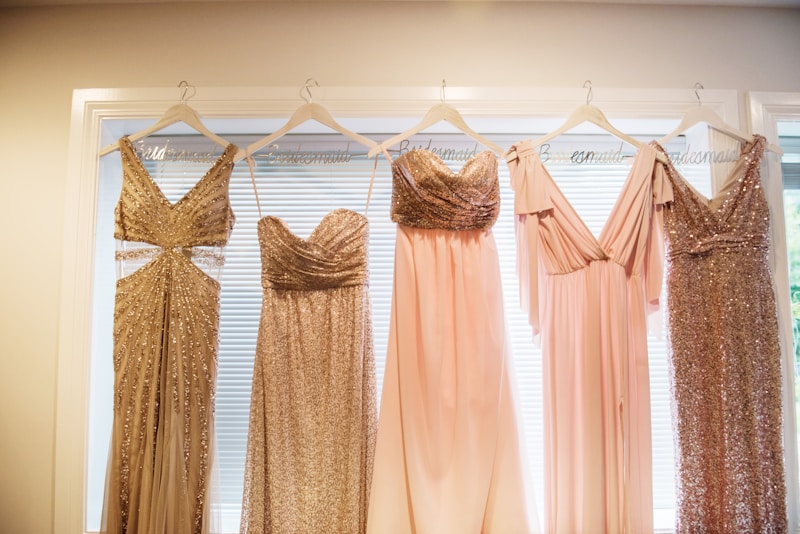Timing Tips for Wedding Dress Success: Your Ultimate Guide
Timing Tips for Wedding Dress Success
Choosing the perfect wedding dress is one of the most memorable parts of planning your big day. However, the timing of various aspects surrounding your wedding dress can make a significant difference in achieving success. This guide explores essential timing tips that will help you secure the dress of your dreams without a hitch. From selecting the right time to shop, to scheduling alterations, we’ve got you covered.
Why Timing Matters in Wedding Dress Shopping
When it comes to wedding planning, timing is everything. Purchasing your wedding dress at the right time can lead to better choices, reduced stress, and overall satisfaction. Here’s how timing plays a pivotal role:
- Availability of Styles: Boutique designers often release new collections seasonally. Knowing when these collections drop will give you access to the latest styles.
- Lead Time: Dresses usually take several months to arrive after ordering. Understanding the timeline ensures you won’t be left dressless close to your wedding date.
- Alterations: Finding the right seamstress and scheduling fittings takes time. Allowing yourself ample time will help you avoid rushing and ensure quality adjustments.
Key Timing Tips for Wedding Dress Success
1. Start Early
Begin your wedding dress search at least 10 to 12 months before your wedding date. This timeline allows you enough time to explore different styles and designers. Additionally, early shopping increases the chances of finding the perfect dress at the best price, avoiding last-minute rush fees.
2. Research Trends Ahead of Time
Stay updated on current wedding dress trends by following bridal magazines, blogs, and social media pages. Collect images of dresses you love and note what styles resonate with you. However, don’t get locked into trends too tightly; you should choose a dress that reflects your personal style.
3. Schedule Appointments
When visiting boutiques, schedule your appointments in advance. Many bridal shops have limited availability, and drop-in visits may lead to frustration. Aim for weekdays or early mornings, as weekends often attract larger crowds.
4. Consider Seasonal Variations
Wedding dresses can sometimes mirror fashion trends, which shift with each season. If you’re planning a spring wedding, look for dresses that make use of lighter fabrics and floral accents. For a winter wedding, heavier fabrics and dramatic designs may be more appropriate. Aligning your dress selection with the season can enhance the overall aesthetic of your wedding.
5. Factor in Customization Time
If you’re interested in a custom-designed gown, discuss timelines with your designer well in advance. Custom dresses may take longer, typically three to six months. Ensure you have a clear understanding of the process and timeline before committing.
6. Plan for Fittings
Schedule your fitting appointments strategically. Ideally, your first fitting should be about 8 weeks before the wedding. This timeframe allows your seamstress to make necessary adjustments and conduct additional fittings as needed. Factor in an extra fitting, just in case further adjustments are necessary.
7. Purchase Accessories Early
Don’t forget to allocate time for accessories like veils, shoes, and jewelry. These items should complement your gown and can take several weeks to arrive. Preparing them early in your wedding planning will simplify your tasks as the big day approaches.
Table: Timing Checklist for Wedding Dress Success
| Milestone | Recommended Timing |
| Begin Dress Search | 10-12 months prior |
| Research Trends | Ongoing |
| Schedule Appointments | 8-10 months prior |
| First Fitting | 8 weeks prior |
| Finalize Accessories | 6-8 weeks prior |
Popular Wedding Dress Questions
When navigating the journey to find your wedding dress, many brides have similar questions in mind:
- What are the best places to buy wedding dresses?
- How much time should I allocate for alterations?
- What styles suit different body types?
- Do I need to make an appointment to try on dresses?
- How do I manage my budget for a wedding dress?
Conclusion: Make Every Moment Count in Your Wedding Dress Journey
Ultimately, the success of your wedding dress search hinges on proper timing. By planning ahead, understanding seasonal trends, and leaving space for adjustments and fittings, you can ensure a seamless dress selection process. Remember to enjoy the journey; this is your moment, and the dress you choose will be a lasting memory of your special day. For best results, maintain communication with your designer, bridal shop, and seamstress as you navigate through this exciting phase. Happy dress hunting!
